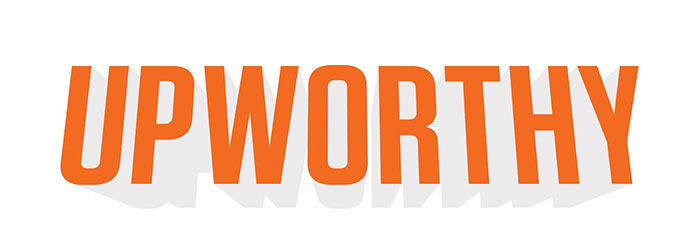- Home
- Blog
- Content Marketing
- The Rise of Upworthy and What it Means for Content Marketing
The Rise of Upworthy and What it Means for Content Marketing
-
 7 min. read
7 min. read
-
 Trevin Shirey
Trevin Shirey VP of Marketing
VP of Marketing
- Trevin serves as the VP of Marketing at WebFX. He has worked on over 450 marketing campaigns and has been building websites for over 25 years. His work has been featured by Search Engine Land, USA Today, Fast Company and Inc. Read his review of working with WebFX for the last 15 years.
In a December 2013 article, Venture Beat called Upworthy “content marketing at its worst.” CNN came under fire for writing Upworthy-style headlines about sensitive subjects. There is even a browser plugin called “Downworthy” that promises to change the site’s viral headlines into realistic versions. Despite the phenomenal success that Upworthy has experienced, it seems like a fairly solid chunk of the internet hates their collective guts.
If you don’t have a Facebook account or have been camped out under a rock for the last few months, Upworthy is a so-called “viral content mill” known for sharing content found on other websites.
The site opened in 2012 with the goal of sharing “things that matter.” By the end of the year, they had more than 700,000 Facebook fans.
A large majority of Upworthy’s success has been attributed to its headlines. Called “clickbait,” they usually invoke an emotional reaction, or at least make you curious enough to click through to the post it’s attached to. And the company takes clickbait seriously: Upworthy writers come up with 25 different headlines for each new post.
Although most marketers may be inclined to write off Upworthy’s content model without a second thought, there are some important lessons to be learned from their rise and continued success.
Here are three ways the Upworthy model could impact, or even improve, your content marketing.
Headlines Are Incredibly Important
In an interview with Business Insider, Upworthy CEO and co-founder Eli Pariser said this about the company’s “write 25 headlines” model:
The ethos behind the 25 headlines is, you can have the best piece of content and make the best point ever. But if no one looks at it, the article is a waste. A headline is all about getting the article in front of people.
[…] A good headline can be the difference between 1,000 people and 1,000,000 people reading something.
Pariser went on to say call post virality “a balance of how good the packaging is and how good the content is.” He indicated that Upworthy may sometimes “trick” someone into viewing content with a sensational headline – but it still gets the stories read, and if the viewer loves it, they’re going to share it.

If you want your content to go viral, this does not mean that you should start writing Upworthy-style headlines for your blog posts. In fact, the backlash that other websites have received for emulating them indicates that you should avoid using this method.
But what it does tell us is that a good headline is more important than ever for drawing in readers. There is a lot of competition on the internet.
There are a lot of articles, blogs, and infographics vying for our attention. But you probably only get one chance to get a click from a search or an article in a RSS reader, and whether or not you get it depends on your headline.
If it’s not targeted, interesting, thought-provoking, or sometimes even the tiniest bit sensational, your reader is going to walk away.
Think of it this way: would you have clicked on my post if the title was simply “Lessons Learned From Upworthy”? Eh, maybe. What about “Upworthy and Content Marketing”?
Nope.
Content is King, But it Doesn’t Have to Be Yours
As you’ve probably already gathered, Upworthy doesn’t succeed because they produce a ton of original content. The website has several curators who are paid to comb the internet for content with a high potential to go viral. Not everything they post takes off, but when it does, it has the potential to garner millions of views.
Although this model raises valid concerns about copyright and credit, it’s been highly successful for them, and shows that it’s entirely possible for a website to make money by promoting content produced by other people.
So what does this mean for your company’s content marketing strategy? Well… have you tried talking about something other than yourself lately?
 Not everything you post on a company blog needs to be about you. In fact, customers are more likely to follow your content marketing efforts if they’re fairly general, appealing to those in the same industry or with interests relating to your products or services.
Not everything you post on a company blog needs to be about you. In fact, customers are more likely to follow your content marketing efforts if they’re fairly general, appealing to those in the same industry or with interests relating to your products or services.
Upworthy shares interesting content they found elsewhere for pageviews and ad impressions. You should share interesting content found elsewhere because it gives potential customers something to read – and shows that you know your stuff.
To further my point: the Content Marketing Institute says that the one thing standing between your business and a successful content marketing strategy is you – that is, leading with self-promotional content can keep your customers from getting interested. That’s why you usually see business logos at the bottom of infographics, after all.
Bonus Read: What is Clickbait and Is It Good or Bad?
Shares Mean Everything
According to this infographic, Upworthy increased Facebook and Twitter shares of their content by 398% when they added scrolling “share” buttons to each post.
Whoa.
Giving people an easy way to share your content is extremely important. If you publish a fantastic blog post, but don’t add a “tweet this” button somewhere, do you really think a busy reader is going to manually copy the URL, load Twitter in a new tab, paste in the URL, write their own description, open yet another new tab to look up your @username so they can mention you, and then post it? No way.
I got tired just typing that.

I’ll readily admit this: I am a very lazy social sharer, and I’m not the only one. If I have to do more than a few seconds of work to share something on Twitter, I’m probably not going to do it. This is why your content should be as easy to share on social media as possible.
Your reader just spent their valuable time reading your post. Don’t make them work even harder to share it!
Even with their catchy headlines and knack for identifying great content, a huge amount of Upworthy’s success stems from their presence in your social media feeds. They even acknowledge this in a blog post, saying that their posts go viral only because people share them.
So if you’re convinced that your map of the top ISPs in America needs to make it to the front page of The Huffington Post, make absolutely sure someone can share it in a single click.
(We’re not bragging. Okay… maybe just a little.)
The Takeaway: Marketing is About “How,” Too
If there’s one thing you should learn from the Upworthy model, it’s that you shouldn’t just focus on what you’re trying to sell. You should consider how you’re marketing it.
This doesn’t mean that your content shouldn’t be great, or that you shouldn’t strive to create the very best content marketing program out there.
Don’t stop what you’re doing if you know in your heart that it’s good. But think about how you’re doing it, and ways you could get more eyes on it. Could your headlines be a little tighter?
Should you stop squeezing promos for your newest product into every blog post? Is your content easy to share on Twitter and Facebook?
Despite how you may feel about Upworthy and their business model, their ongoing success indicates that the marketing landscape is continuing to change, and what “works” online is a moving target. While it’s not a good idea for companies to emulate clickbait websites like this, there are a few things to be learned from their success.
At the very least, you probably know what not to do, right?
-
 Trevin serves as the VP of Marketing at WebFX. He has worked on over 450 marketing campaigns and has been building websites for over 25 years. His work has been featured by Search Engine Land, USA Today, Fast Company and Inc. Read his review of working with WebFX for the last 15 years.
Trevin serves as the VP of Marketing at WebFX. He has worked on over 450 marketing campaigns and has been building websites for over 25 years. His work has been featured by Search Engine Land, USA Today, Fast Company and Inc. Read his review of working with WebFX for the last 15 years. -

WebFX is a full-service marketing agency with 1,100+ client reviews and a 4.9-star rating on Clutch! Find out how our expert team and revenue-accelerating tech can drive results for you! Learn more
Try our free Marketing Calculator
Craft a tailored online marketing strategy! Utilize our free Internet marketing calculator for a custom plan based on your location, reach, timeframe, and budget.
Plan Your Marketing Budget

Looking for More?
Get expert ideas, industry updates, case studies, and more straight to your inbox to help you level up and get ahead.
"*" indicates required fields

Proven Marketing Strategies
Try our free Marketing Calculator
Craft a tailored online marketing strategy! Utilize our free Internet marketing calculator for a custom plan based on your location, reach, timeframe, and budget.
Plan Your Marketing Budget
What to read next





